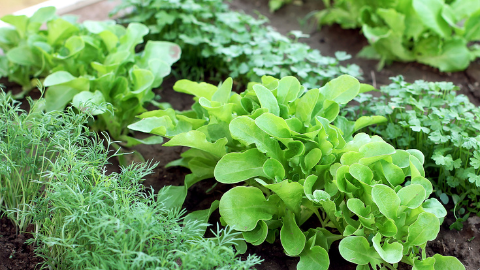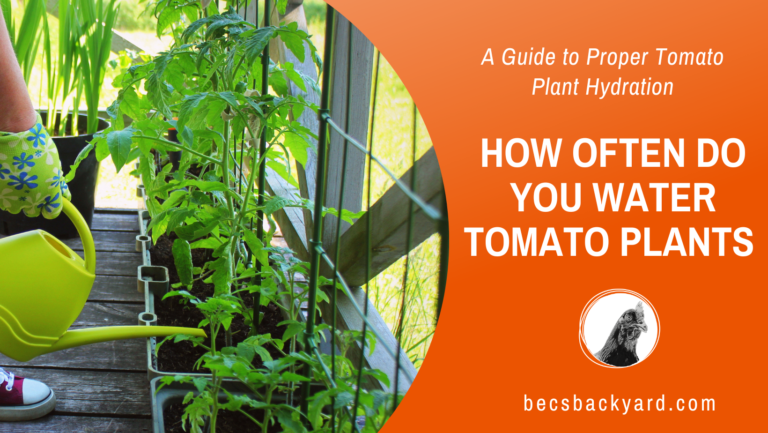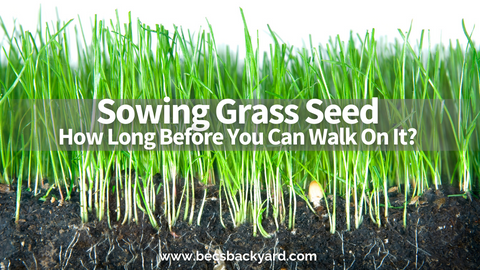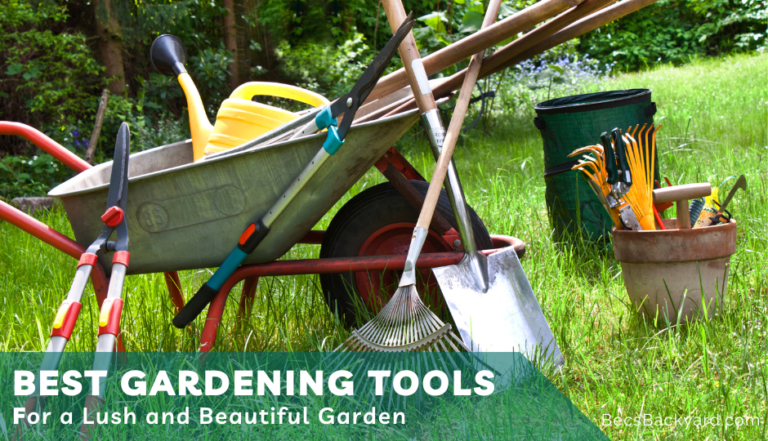Zone 11 Spring Vegetable Planting Schedule: Optimize Your Garden’s Productivity

In Zone 11, your garden offers a unique opportunity for growth and productivity due to the region’s warm climate and minimal risk of frost. This zone covers tropical areas such as Hawaii, Puerto Rico, and parts of Florida, which experience average minimum temperatures that are comfortably situated between 40 to 50 degrees Fahrenheit even in the winter months. As a resident of this region, you can enjoy year-round planting and harvesting, giving you the advantage of an extended growing season for a wide variety of vegetables.
With the arrival of spring, it’s the perfect time for you to start planning your vegetable garden. The timing for planting in Zone 11 can differ from the general recommendations found in most gardening guides, as your growing conditions are milder and more forgiving. You can focus on a planting schedule that takes into account the specific needs of each vegetable variety you wish to cultivate, ensuring optimal growth and yield.
Remember to also consider the soil temperature, which plays a critical role in germination. Your region’s consistent warmth allows for direct sowing of many seeds outdoors, but starting some more delicate or heat-loving plants indoors might still be beneficial. By doing this, you ensure that your vegetables receive the right care from the very beginning and are well-established by the time you transplant them to your garden.
Understanding Planting Zones
Planting zones, also referred to as hardiness zones, are geographically defined areas that categorize regions based on their climatic conditions, particularly their coldest temperatures. These zones are crucial for gardeners like you, as they guide when and what you can plant to ensure successful growth and yield.
Zone 11, which often includes areas such as Hawaii and the lowermost parts of Florida and California, is defined by its warm climate. In these regions, the concept of a last frost date is usually irrelevant due to the consistently warm temperatures year-round. Here’s a simplified overview:
- Region: Hawaii, Southern Florida, Southern California
- Planting Zone: 11
- Last Frost Date: Generally not applicable
For Zone 11, your planting schedule is less restricted by the worry of frost and more guided by wet and dry seasons. It’s essential that you select plants tailored to thrive in a warmer climate, often tropical or subtropical varieties. Here’s what you need to keep in mind:
- Selecting Plants: Choose heat-tolerant and, in some cases, drought-resistant plants.
- Timing: Some vegetables may benefit from planting during milder temperature months to avoid the peak heat that can stress plants.
By understanding your specific planting zone, you greatly enhance your garden’s potential. Pay close attention to the unique climate conditions of your zone to optimize your planting schedule.
Designing Your Vegetable Garden
When embarking on the journey of setting up your vegetable garden in Zone 11, thoughtful design is crucial. Garden design not only impacts the aesthetics but also the functionality of your garden. Start by selecting a site that receives ample sunlight and has good drainage to ensure your plants have the essential conditions to thrive.
Begin by sketching out the layout. Spacing is paramount in vegetable gardening, as each plant requires room to grow and plenty of airflow to prevent disease. Utilize resources like Square-Foot Gardening to plan your area effectively.
Vegetable Garden Tips:
- Raised Beds: They offer excellent drainage, extend the growing season, and make tending to your garden easier on your back.
- Paths: Leave enough space between beds to move around comfortably.
When considering design, incorporate companion planting to make the most of your space and to naturally deter pests and boost plant health.
Sample Layout for Raised Beds:
| Bed Size | Vegetables | Spacing |
|---|---|---|
| 4×4 ft | Tomatoes, Basil, Marigolds | 1 plant/ft² |
| 4×8 ft | Carrots, Lettuce, Onions | 16 plants/ft² (Carrots) |
Keep a journal to note when you plant each vegetable, observing how they perform in your designed layout and adjust as necessary for the following season. Knowledge of your specific Zone 11 climate aids in tailoring your garden design to suit regional conditions, leading to a successful, bountiful harvest.
Spring Vegetable Selection for Zone 11
In Zone 11, your spring vegetable planting encompasses a variety of heat-tolerant veggies able to withstand the warmer temperatures. When selecting which vegetables to plant, consider factors like seed germination requirements and the climate’s impact on each plant’s growth cycle.
Lettuce and spinach, with their quick germination, thrive when sown directly into your garden as early as late winter to early spring. These leafy greens prefer cooler weather and can be harvested within weeks.
For a steady supply of broccoli, cauliflower, and cabbage, start indoors or purchase seedlings to transplant into your garden. These cruciferous vegetables can tolerate a bit of heat but should ideally be in the ground by mid-spring.
Beans, both bush and pole varieties, are suitable for spring planting. Plant them once the soil has warmed up to ensure proper germination. Similarly, corn requires warm soil, making it ideal for a spring planting schedule in Zone 11.
Tomatoes and peppers are warm-season staples. Begin these indoors or with purchased seedlings and transfer to the garden once there’s no risk of cool weather damaging your plants.
Root vegetables like carrots, beets, parsnips, and celery can be sown directly into rich, well-draining soil as they require a longer season to mature. Plant them early in the season to allow them ample growing time.
Note that asparagus is typically planted as one-year crowns in spring, but remember it’s a perennial and won’t produce a significant harvest until its third season.
To summarize, here’s a quick format to guide you:
- Leafy Greens: Lettuce, Spinach (Direct sow early)
- Cruciferous Veggies: Broccoli, Cauliflower, Cabbage (Start indoors or transplant)
- Legumes: Beans (Direct sow after soil warms)
- Starchy Plants: Corn (Direct sow after soil warms)
- Fruit Vegetables: Tomatoes, Peppers (Transplant after frost)
- Root Vegetables: Carrots, Beets, Parsnips, Celery (Direct sow early)
- Perennials: Asparagus (Plant crowns)
Always monitor your garden’s soil moisture and adjust watering based on the specific needs of each vegetable type. Happy planting!
Planting Calendar and Timing
To achieve a successful harvest in Zone 11, you need to carefully consider the timing of each planting stage. The warm tropical climate of this zone offers a unique planting window that allows for a variety of vegetables to thrive.
Starting Seeds Indoors
In Zone 11, starting seeds indoors isn’t typically necessary due to the warm climate, but it can be beneficial for certain vegetables that require a controlled environment. If you choose to start seeds indoors, do so about 4-6 weeks before the last expected spring date. This helps ensure your seedlings are robust enough to handle the transition to the outdoor environment.
Transplanting to the Garden
Transplanting your seedlings to the garden should be timed when the soil is consistently warm. In Zone 11, this can be as early as late winter to early spring. Be sure to harden off your plants by gradually exposing them to outdoor conditions over a week to prevent shock.
Direct Sowing Outdoors
For direct sowing outdoors, planting dates vary:
- Warm-season vegetables like tomatoes and peppers: Sow after the last spring frost when the soil temperature is at least 60°F.
- Cool-season vegetables such as leafy greens: Plant these in the late summer to early fall as they can tolerate slightly cooler temperatures.
Use your Zone 11 planting calendar as a guide to determine the best planting dates for each vegetable you wish to grow. Remember, timing is crucial for your gardening success in this warm and frost-free zone.
Garden Maintenance and Harvesting
Your spring vegetable garden in Zone 11 requires consistent attention to thrive. Frequent maintenance is key to a bountiful harvest. You’ll be anticipating the maturity of various plants, and your efforts will directly affect the yield.
Watering: Regular watering is crucial, with a focus on deep, infrequent applications to encourage strong root development. Avoid overhead watering to minimize leaf diseases.
Weeding: Stay ahead of weeds, as they compete with your vegetables for nutrients and water. Mulching can significantly reduce the need for weeding and conserve soil moisture.
Pest Control: Inspect your plants often for pests. Organic methods like introducing beneficial insects or using insecticidal soaps are effective.
Fertilization: Feed your plants with the right balance of nutrients. A slow-release or liquid fertilizer can provide the necessary nutrients without overfeeding.
Support Structures: Tall or vining vegetables may need stakes, cages, or trellises. Install these early to avoid damaging the roots later on.
Harvesting:
- Harvest in the morning for best flavor and moisture content.
- Regularly picking vegetables when they’re ready can stimulate further production.
- Use clean, sharp tools to cut vegetables from the plant to minimal damage.
Monitoring Maturity:
- Understand the expected time to maturity for each vegetable to anticipate harvesting.
- Signs of readiness vary; tomatoes may change color, while leafy greens might reach a certain size.
| Vegetable | Sign of Maturity | Approx. Time to Harvest |
|---|---|---|
| Tomatoes | Color changes from green to red, yellow, or purple | 60-80 days |
| Leafy Greens | Leaves reach a usable size; before flowering | 30-60 days |
Your diligence in garden maintenance sets the stage for a successful and satisfying harvest season.
Frequently Asked Questions
In this section, you’ll find targeted advice to help you successfully plant your spring vegetable garden in the warm and consistent climate of Zone 11.
When is the ideal time to start planting a vegetable garden in Zone 11?
You can begin planting most of your vegetable garden in Zone 11 as early as late winter or early spring, owing to the mild climate that prevails year-round.
Which vegetables thrive best in the climate of Zone 11?
Warm-season crops like tomatoes, peppers, cucumbers, and eggplants thrive in Zone 11. These vegetables benefit from the extended warm periods without frost.
What is the earliest you can plant spring vegetables in Zone 11?
In Zone 11, you can typically plant spring vegetables as early as January or February, as the risk of frost is minimal and soil temperatures are suitable for many warm-season crops.
How does the Zone 11 climate affect planting schedules compared to other zones?
Zone 11’s climate allows for a longer growing season compared to cooler zones, enabling you to plant earlier in the year and often allows multiple growing cycles or successive plantings.
What should be considered when planting herbs in Zone 11 during the spring?
When planting herbs, consider choosing those that can tolerate the heat, such as basil or oregano, and ensure they have good drainage to avoid root rot from possible heavy rainfall.
Can you provide a guide for succession planting in Zone 11 to ensure a continuous harvest?
For a continuous harvest, plan a succession planting schedule with 2-week intervals. Begin with fast-maturing vegetables like lettuce or radishes and follow with longer-season crops.







